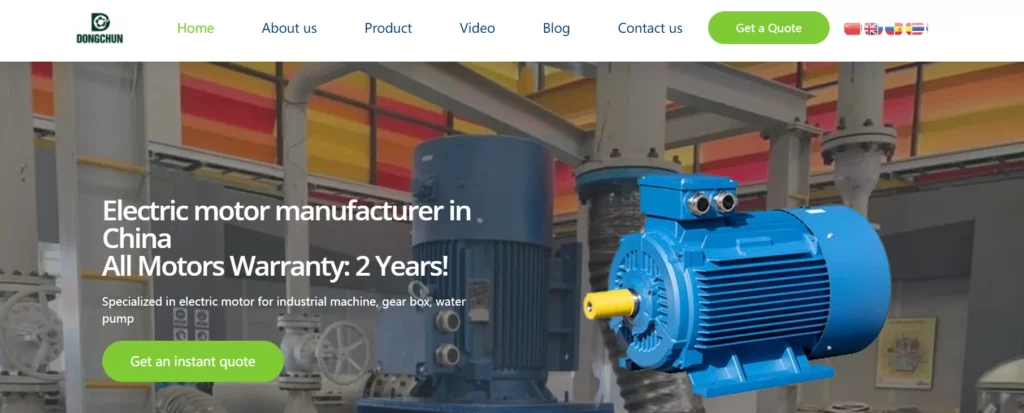모터 진동 및 소음: 엔드 캡 축 진동 및 브러시 장치 진동

이전 논의에서 우리는 모터 진동에 영향을 미치는 로터 요인에 중점을 두었습니다.
오늘은 엔드 캡 축 진동과 브러시 장치 진동이라는 두 가지 추가 요소에 대해 논의하겠습니다.
제조 과정에서 진동과 소음은 밀접하게 연관되어 있으며, 진동으로 인해 발생하는 기계적 소음도 있습니다.
따라서 기계적 소음 관리는 기계적 진동을 제거하는 것에서부터 시작되어야 합니다.

엔드캡 축방향 진동 및 소음
베어링 진동은 기계적 소음의 원인인 엔드 캡 축 진동의 주요 원인입니다.
이는 엔드캡의 축방향 동적 강성이 작아지면 진동 속도와 소음이 더 커질 수 있는 소형 모터의 경우 특히 그렇습니다.

브러시 장치 진동 및 소음
브러시 장치 진동 및 소음은 정류자 표면 상태, 브러시와 브러시 그립 사이의 큰 간격, 브러시 압력이 부족하여 브러시가 비뚤어지게 되는 현상, 브러시 그립, 브러시 프레임 및 브러시 막대의 강성이 부족한 등 여러 요인에 의해 발생합니다.
DC 모터 작동 중 브러시와 정류자 표면 사이의 슬라이딩 접촉 조건은 흑연 필름과 먼지 입자로 덮인 산화구리 필름을 생성합니다.
이 막은 모터의 정류 성능뿐만 아니라 진동, 소음에도 영향을 미칩니다.
실제로 무부하 작동 중에는 슬라이딩 접촉면에 피막이 쉽게 형성되지 않아 브러시와 정류자 사이의 건식 마찰이 발생하고 소음이 증가합니다.
실제로 압연강 DC 모터에서 무부하 작동은 전체 시간의 50% 이상을 차지하며, 무부하 조건에서는 부하 조건보다 소음이 6~10dB 더 높습니다.
기계적 원인으로 인한 진동과 정류자 표면 진동은 다르며, 후자는 낮은 모터 속도에서 확인할 수 있습니다(브러시를 만져 진동을 느끼는 방식).
슬라이딩 접촉으로 인해 발생하는 브러시 진동 소음의 스펙트럼은 일반적으로 1000~-8000Hz 범위이며 모터 속도 변화에 따라 크게 변하지 않으므로 기계적 원인과 구별됩니다.

슬라이딩 접촉으로 인해 발생하는 브러시 진동 소음도 브러시 극성의 영향을 받습니다.
예를 들어, DC 발전기의 포지티브 브러시는 정류자 표면에서 물을 흡수하여 윤활막을 형성하는 흑연과 탄소 결정을 분리하는 포지티브 브러시의 능력으로 인해 네거티브 브러시보다 덜 진동하는 반면 네거티브 브러시는 이를 제거합니다.
브러시 등급의 선택은 처음에는 정류 성능을 기준으로 하지만 브러시의 진동과 소음도 고려해야 합니다.

기계적 소음 외에도 공기역학적 소음도 모터 소음 제어, 특히 고속 모터의 경우 중요한 문제입니다. 우리는 향후 논의에서 이 주제를 더 자세히 다룰 것입니다.
이 주제에 대해 계속 학습함으로써 지식을 향상하고 오늘날 끊임없이 진화하는 기술 환경에서 경쟁력을 유지할 수 있습니다.
중국의 전문 전기 모터 제조업체

중국은 다양한 응용 분야를 위한 고품질의 비용 효율적인 모터를 생산하는 수많은 제조업체가 있는 글로벌 전기 모터 산업의 주요 업체입니다.
Dongchun motor는 국제 표준을 충족하고 고객의 특정 요구 사항을 준수하도록 설계 및 제작된 광범위한 전기 모터를 제공합니다.
이 회사는 맞춤형 애플리케이션을 위한 단상 및 3상 AC 모터, 브레이크 모터, 기어 모터 및 특수 모터를 포함하는 광범위한 제품 포트폴리오를 보유하고 있습니다.







